Bud: The Story of a Feral
On the outside looking in
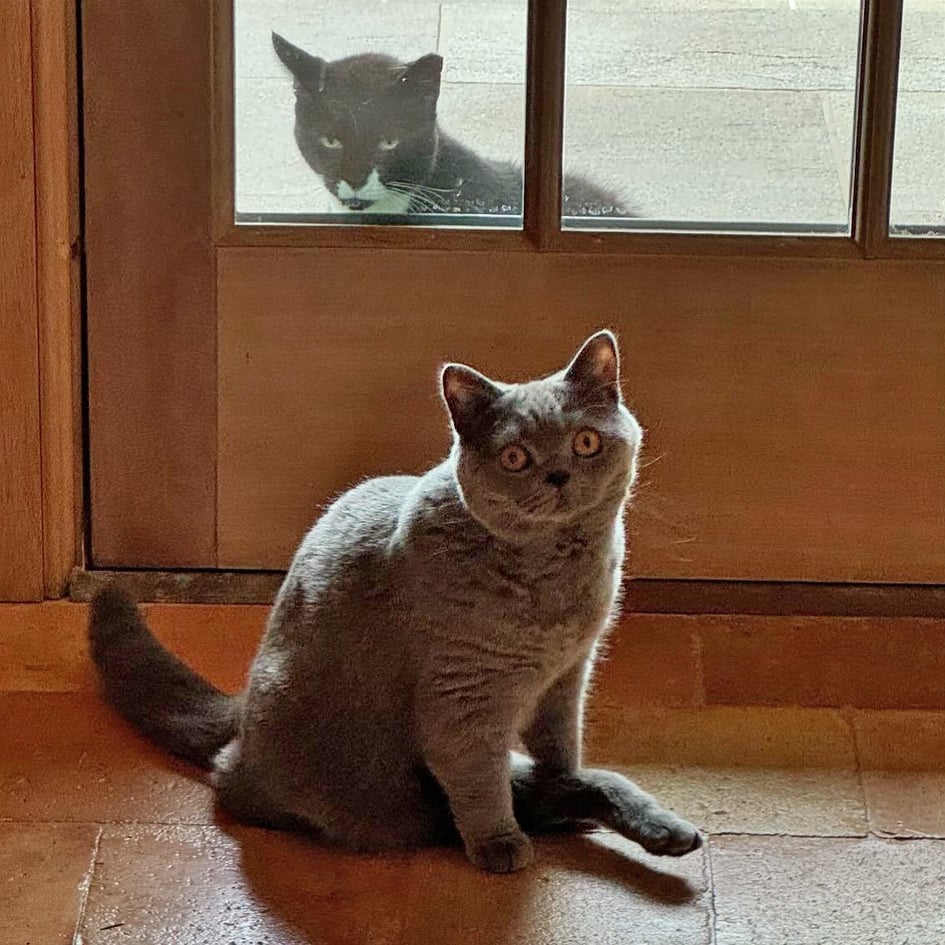 This photo says so much. On one side of the door is our Cocomelon, safe and sound in our house. On the other side is Bud, a handsome feral Tuxedo we’ve been working with for months. He wants to join us — you can see it in his face — but he’s hesitant and frightened, caught between his desire for food and comfort and his fear of the unknown. It’s so sad. But you know me: I love a challenge!
This photo says so much. On one side of the door is our Cocomelon, safe and sound in our house. On the other side is Bud, a handsome feral Tuxedo we’ve been working with for months. He wants to join us — you can see it in his face — but he’s hesitant and frightened, caught between his desire for food and comfort and his fear of the unknown. It’s so sad. But you know me: I love a challenge!
NEWS FLASH: The challenge paid off! On October 19, Bud summoned all his courage and came in from the cold. We’d tied the mudroom door open from the outside and put a gate at the end of the hallway with Helen Rose and Cocomelon luring him in. Buddy came inside to see Helen and Coco… and the rest is history! On October 21, he went to the vet, and we learned he is 8 to10 years old and has many missing teeth. He got a dental cleaning and an ear cleaning and was tested and vaccinated. He’s adjusting well, and we feel he’s relieved to be inside. He’s a good boy.
Because October 16 was National Feral Cat Day, I want to share Bud’s whole story. So, here goes I first became aware of him last winter when he lived on the grounds of a condo complex, where residents fed him and his Calico sister, Callie. Without a kitty shelter, they lived in the bushes. When the landlord told the residents they’d be evicted if they continued feeding the cats, a resident contacted me.
My colleagues at North Shore Animal League America spent weeks trying to trap them, and after catching Callie first, they finally got Bud. Both were taken to NSALA for medical exams and sheltered in a cozy room until we figured out their future. Once the winter months were behind them, they were relocated to our property. I had a spacious shed and “catio” prepared for their transition, with beds and cat trees, toys and window perches, and plenty of nutritious wet food. There, they were cared for and fed for the next seven weeks to acclimate to their new territory.
When the weather finally warmed in May, we opened the shed’s kitty door. I followed the exact protocol I’d received from experts to ensure the best chances of their permanently staying on our property. But sadly, Callie bolted, and we haven’t seen her since. I’m still having the residents at the condo complex check daily in case she ventured back there, which cats have been known to do. Who knows, maybe she’s still trying to get there. It breaks my heart!
Poor Buddy was so lonely. He cried at our doorstep all day long. Howard and I talked to and fed him multiple times a day. I kept our mudroom door open for him to join us inside, but he wouldn’t step in. He came close to us but retreated if we tried to pet him.
Knowing it would get cold soon, Howard and I lost sleep over him. Bud loved it here but wouldn’t use any of the dozen insulated kitty houses we provided; instead, he slept in the bushes, just as he and Callie did at the condo complex. He didn’t even go back into his warm starter shed, which was probably for the best, as a family of raccoons, a possum, and a fox had decided that the shed belonged to them. We have multiple cameras, so we knew what Bud was up to every second, and the daily drama of the animals in the shed is now my favorite reality show.
Speaking of reality shows, here’s a video of Howard and me trying to persuade Bud that life would be beautiful if he let his guard down.
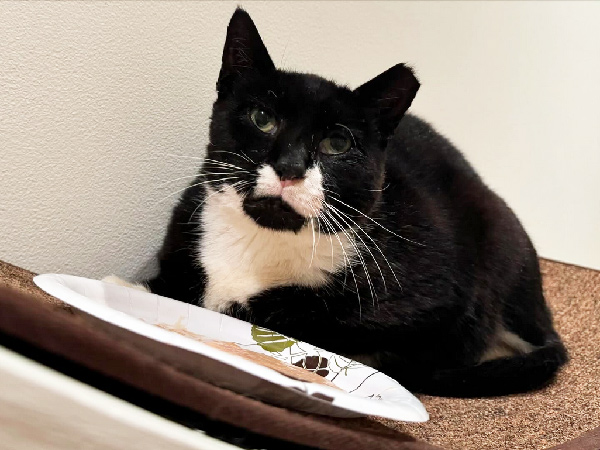
October 22: Bud indoors and getting used to the good life he so deserves. I’m so proud of him.
Bud is just one of the millions of homeless cats who suffer from hunger, injury, and cruelty every day of the year. It feels overwhelming but there are actions we all can take. NSALA offers two programs that help address this horrible problem.
• SpayUSA is a nationwide referral network offering low-cost spay and neutering of cats and dogs through vouchers for personal pets, as well as subsidy funding for individuals who care for stray and feral cats in their communities.
• People doing Trap/Neuter/Vaccinate/Return locally should look into NSALA’s Community Outreach Program, which provides various tools for community cat caretakers, from equipment rental to a food bank.
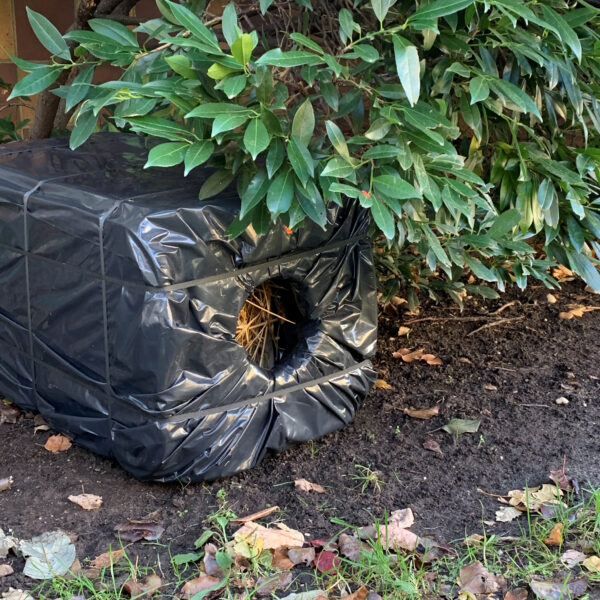
A good example of a warm, waterproof outdoor shelter for cats.
With cold weather fast approaching, now is the time to consider making a proper shelter for your outdoor strays and ferals. NSALA has posted a detailed DIY guide to the best practices for protecting those felines during the winter months.
Protecting our pets is one of our most important responsibilities as caretakers. I’m super aware of this right now, following the devastation hurricanes Helene and Milton caused throughout the southeastern part of our country. Natural disasters affect every aspect of life on Earth, including the lives and safety of animals. Wildlife suffers terribly; I’ve read how hurricanes degrade the habitats of everything from marine animals to birds and land mammals. And I can’t even think about how animals on farms and ranches suffer.
I’m so proud of NSALA’s emergency rescue team, which coordinated transport to the areas affected by recent storms, delivered vital supplies, and brought 35 shelter animals back to New York to make room for those displaced by these disasters. They are my heroes. Read more about their rescue efforts.

One of our wonderful volunteers welcoming a little survivor
of the storm to Long Island.
We are also asking our supporters to consider making a donation in any amount to four of our shelter partners who have been hit hard by these storms. You can learn more at animalleague.org/HurricaneRelief2024.
We may not be able to protect all animals, but we owe it to our pets to prepare them as much as possible in the case of disaster. NSALA has an excellent guide for pet preparedness. I urge you to take a few minutes to read and heed this post and also prepare “go bags” for yourself and all your family members, including your pets.
Closer to home, I want to introduce four wonderful animals at NSALA who are looking for a chance to be loved by a family of their own. First, because October is Adopt a Shelter Dog Month, and October 26 is National Pitt Bull Awareness Day, here are two sweet Pitties. Check out their adoption profiles for details and videos.
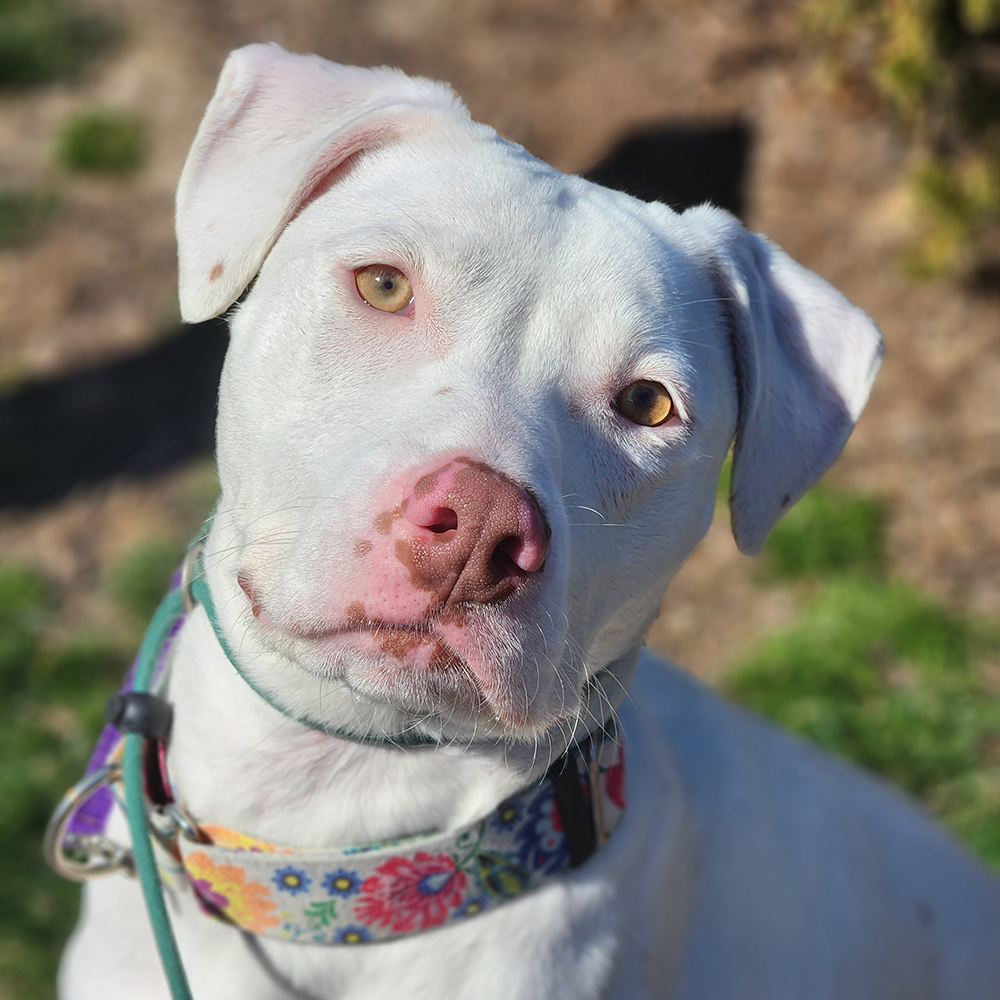 Energetic and playful, Jade, Adopt #T106008, loves to spend time with friends in the dog park. She’ll need an adopter experienced with large breeds to help her focus her energy. Jade is deaf, but that doesn’t mean she has special needs. Dogs rely on body language and visual cues to communicate, so living with a deaf dog is not much different from living with one who can hear. She is amazing!
Energetic and playful, Jade, Adopt #T106008, loves to spend time with friends in the dog park. She’ll need an adopter experienced with large breeds to help her focus her energy. Jade is deaf, but that doesn’t mean she has special needs. Dogs rely on body language and visual cues to communicate, so living with a deaf dog is not much different from living with one who can hear. She is amazing!
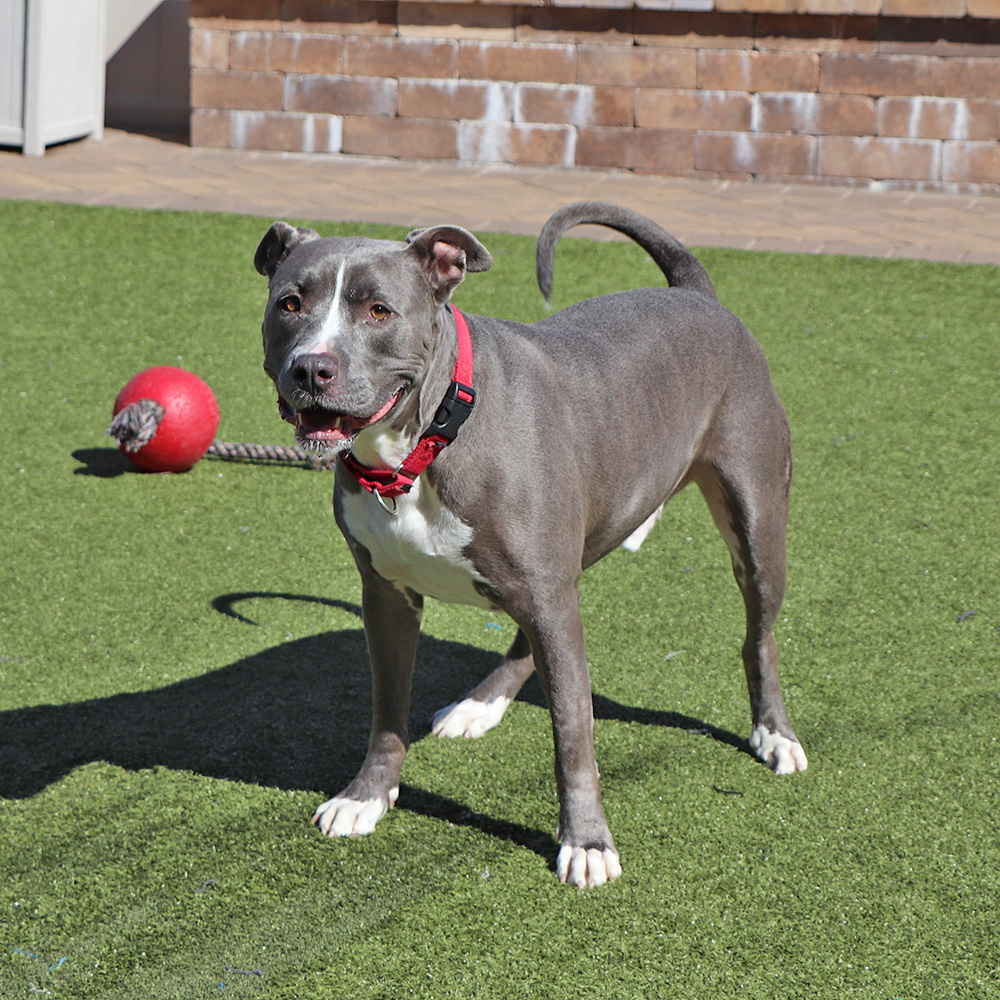 Bobby, Adopt #G27993, is a handsome Blue Nose Pit who has just started training with us and is eager to find an experienced adopter who can continue his education at home. His handlers at NSALA say he’s a big, loveable goofball who’ll make someone a great friend.
Bobby, Adopt #G27993, is a handsome Blue Nose Pit who has just started training with us and is eager to find an experienced adopter who can continue his education at home. His handlers at NSALA say he’s a big, loveable goofball who’ll make someone a great friend.
I certainly cannot ignore the cats at NSALA, so in honor of National Black Cat Day (October 27), National Cat Day (October 29), and, of course, Halloween, here are some beautiful black felines who would love to come home with you .
Chanel, Adopt #H211594 and Dior, Adopt #H211595, are a bonded pair of sweet, small, shy kitties who strut life’s catwalk as a team. Dior, the male, is more confident than the ladylike Chanel, but both are eager for another chance.
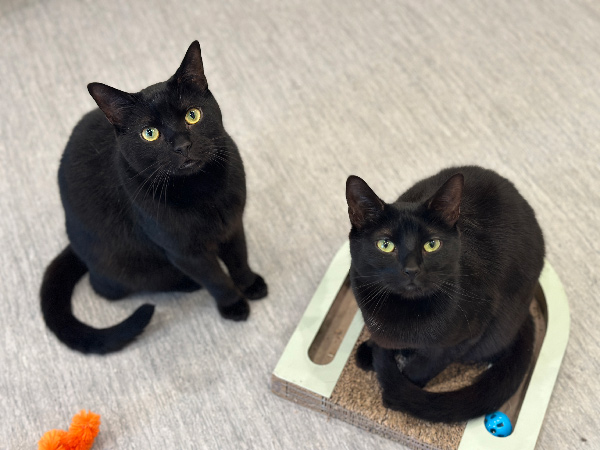
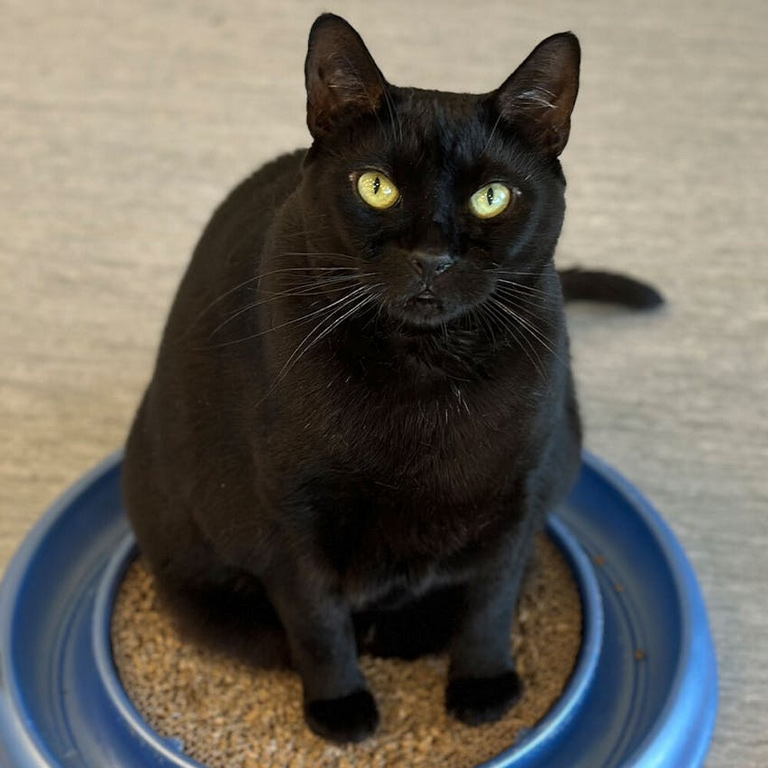 The future for little Beyla, Adopt #MA3792, looked bleak until our team pulled her from a municipal shelter and brought her to safety. She grieved the loss of her former home but has proved her resilience by repaying our kindness with trust. Oh, and she loves sunny windows and feather toys almost as much as she’d love a home of her own.
The future for little Beyla, Adopt #MA3792, looked bleak until our team pulled her from a municipal shelter and brought her to safety. She grieved the loss of her former home but has proved her resilience by repaying our kindness with trust. Oh, and she loves sunny windows and feather toys almost as much as she’d love a home of her own.
I believe these pets will find forever homes, just as I knew it would happen for my special senior foster, Gramma. Declawed and 15 years old, Gramma came to us in August. When I first saw her ears, I thought she was a Scottish Fold, but in fact, her ears are deformed because of earaches that were never treated. She must have suffered so much! But it didn’t stop her from being a sweet, gentle kitty who loved patrolling the halls of our building and won the hearts of everyone on IG.
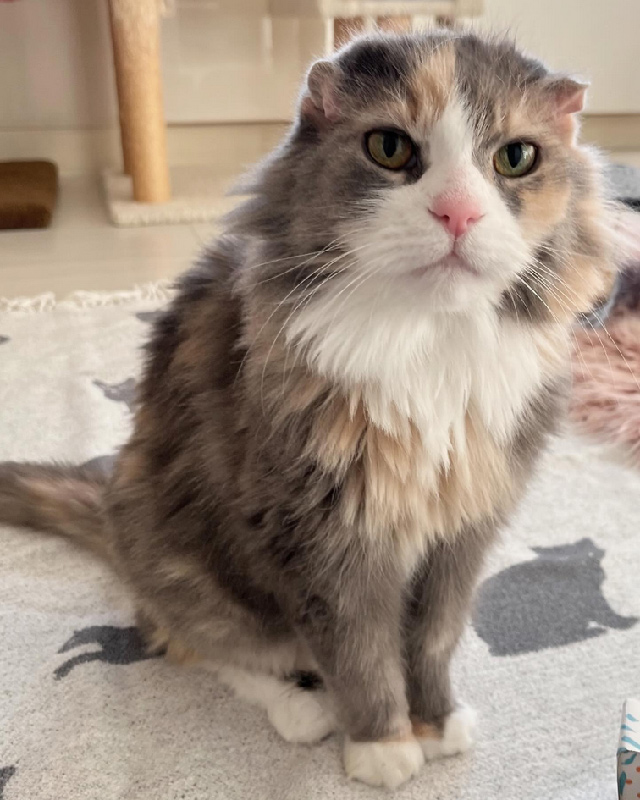
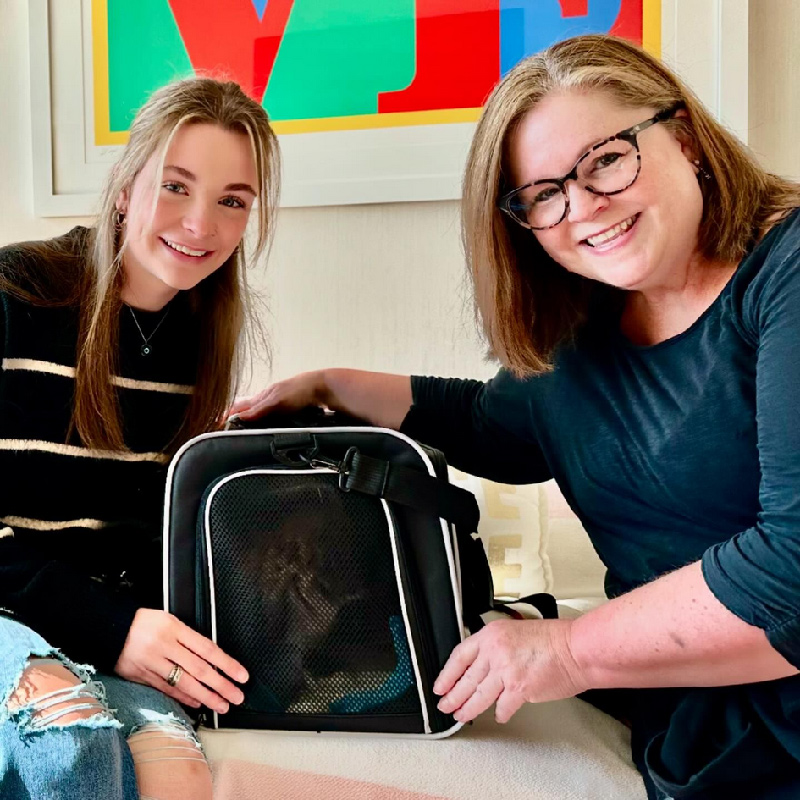
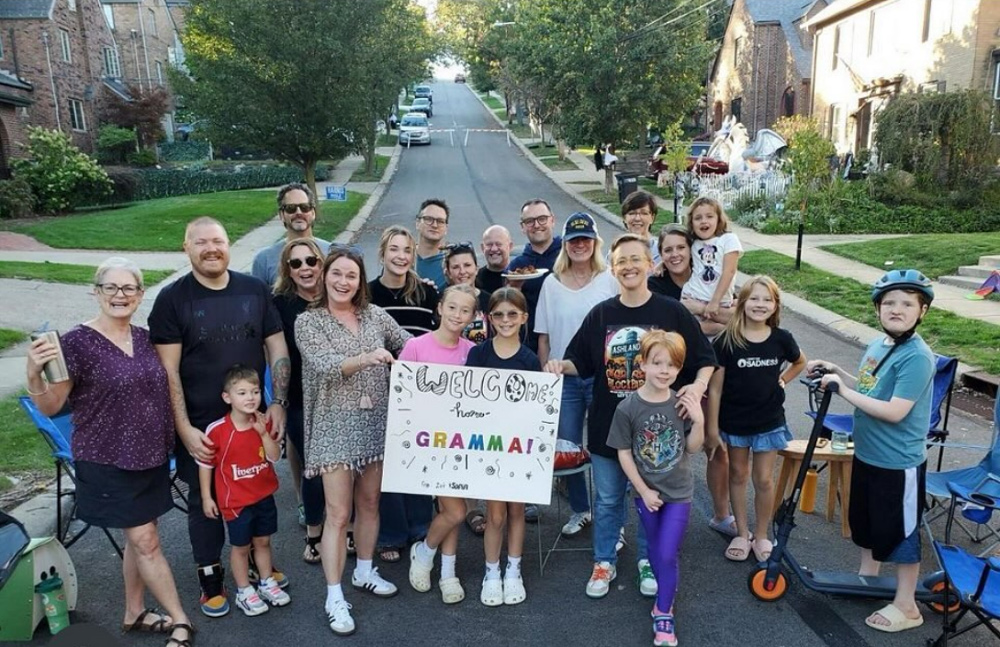 Gramma went home on October 5. That same day, her new neighborhood welcomed her with a block party and a big, colorful sign: “WELCOME HOME GRAMMA!” I cannot tell you how full this made my heart and how wonderful it is to know that Gramma is home for good and will be loved forever.
Gramma went home on October 5. That same day, her new neighborhood welcomed her with a block party and a big, colorful sign: “WELCOME HOME GRAMMA!” I cannot tell you how full this made my heart and how wonderful it is to know that Gramma is home for good and will be loved forever.
xo
Beth
P.S. While you might love Halloween, don’t assume your pets do. This NSALA tip sheet provides great advice to ensure your pets stay safe.
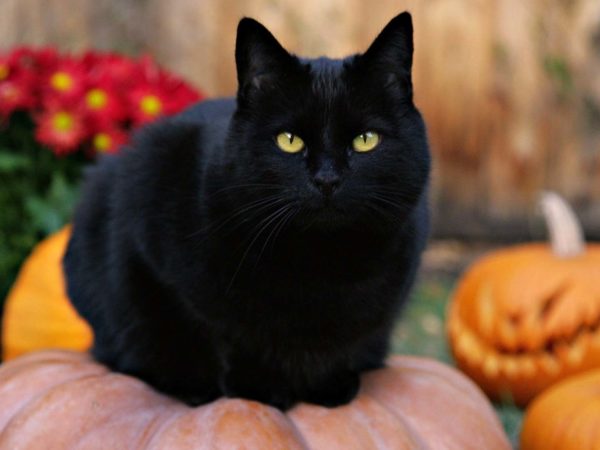 I SHARED THESE SEASONAL TIPS IN THE PAST, AND THEY BEAR REPEATING:
I SHARED THESE SEASONAL TIPS IN THE PAST, AND THEY BEAR REPEATING:
- DO NOT throw away pumpkins. Find some woods nearby and smash the pumpkin open for wildlife to eat. It’s safe and the seeds are a natural dewormer. Plus, you’re recycling a good food source and not feeding the landfill!
- DO NOT bleach your pumpkins to make them last longer. Pumpkins are food to wildlife — deer, squirrels, raccoons, possums, mice, rats, chipmunks, birds, and insects. Use vinegar instead: one part vinegar to 10 parts water. It works as well as bleach and will not hurt wildlife.


